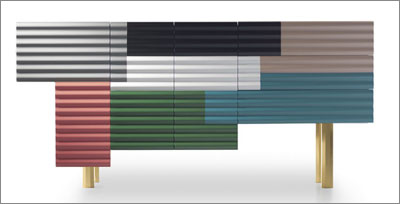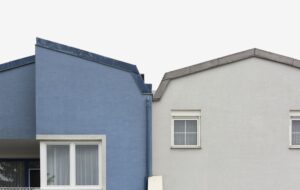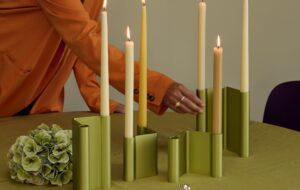|
The design duo’s Almora chair won an award at IMM Cologne last week. Next week in Stockholm, they will reveal a new version of their Uchiwa chair. We spoke to Nipa Doshi and Jonathan Levien about their approach to design At Stockholm Furniture Fair next week, Anglo-Indian design duo Nipa Doshi and Jonathan Levien are expected to reveal developments to their Uchiwa high-backed armchair for HAY, a prototype of which was shown in Milan last year. Its shape is based on a type of Japanese fan – uchiwa – that is made of a circular piece of paper on a bamboo handle. It has an injection-moulded polyurethane shell with two types of upholstery inside – quilted for the domestic market, and durable foam for contract. The legs and frame are solid oak and there is an accompanying footstool. The chair took seven months to develop, the designers say. “The brief was quite clear: we had to make a lounge chair that is affordable and the rest was up to us. In a sense, it was as free as any other project in creative terms, only we had to make a piece with economy of production in mind. Most of the work in an upholstered piece goes into the stitching, so we found a way to minimise this while coming up with an expressive gesture through clever pattern cutting.” Last year, Icon met the design duo at the launch of its Almora collection for B&B Italia, which won the German Design Council’s Best of Best award for Interior Innovation at IMM Cologne last week. ICON: Tell me about your approach to design – for example, how do you go about designing a chair? And how has your approach to design changed over the course of your careers? Jonathan Levien: For us, the chair is a sculpture. It is an object and yet it also defines a space. When we start a project, we’re not really thinking so much about comfort and sitting. We’re thinking more about how we frame people in a space and how we frame what they are experiencing. Our approach to design has evolved as we’ve worked for more companies. For example, working with B&B Italia’s team of engineers on Almora freed us to be more pure in our approach, as we were relying on engineers to make the dream happen. I think that our designs are becoming more daring, more complex and more inventive. ICON: A lot of your products seem to have a story behind them. Is this an essential part of your work? Nipa Doshi: In a way, the product doesn’t have a story outside of itself. The story is what inspires us to do a piece, so it’s something we build our ideas on. Almora, for example, was a chair from which to enjoy the magnificence of nature – hence the name, which is a town in the Himalayas in India – but also to spend time with family. I think the story guides the essence of a project – its identity, its materiality, the feeling. In the end, the customer feels the story, even though they might not know it. And they put their own experiences and their own stories into the object as well. |
Words Debika Ray |
|
|
||
|
VIDEO The Rabari rug collection is inspired by the folk embroidery of the kutch region of India |
||
|
ICON: Do you see yourselves branching out from product and furniture design? ND: I think our work is very suited to spatial design and architecture and its definitely going in that direction – for example, we’ve designed shops for Camper and we’ve also recently worked on a new makeup brand, for which we’ve designed everything, from the interiors to the products and packaging. The next natural step for us would be to design a domestic space or a hotel, because we’ve done all the pieces that would create a space in the hospitality environment.
Doshi Levien’s Madina collection of makeup ICON: Which of your projects are you most proud of? ND: Every year when we launch a collection I always think, how will we ever be able to make something as good as that again? You have that sort of anxiety as a creative person. We love the pieces we do – I love them all equally. JL: My favourite project is always the latest one, the newest one. But of course it’s important that we still love the pieces years after they’ve been designed. We’re not consciously trying to engineer longevity into our designs, but we find that if you really go deep into a project and research it in depth, the work lasts longer and it has longevity.
The Shanty cabinet references the corrugated surfaces used to build informal dwellings across the developing world ICON: What do you think of the current UK design scene and where do you fit into it? ND: Jonathan and I are somewhere in between the established architects and designers such as Jasper Morrison, who are almost masters now, and the young people coming out of places such as the Royal College of Art with a lot of experimental work. I think it’s really important for young designers to do experimental work – do their maximum, extreme work and really put forward a manifesto of what they are about. You have to have a really strong voice in design to survive, because there are so many people out there wanting to do design. Uchiwa for Hay can be seen at the Stockholm Furniture Fair from 3-7 February. Here are some of the other product launches to look our for |
||
|
VIDEO: Doshi Levien and Zaha Hadid Architects’ Patrik Schumacher on “designing the invisible” |
||



















